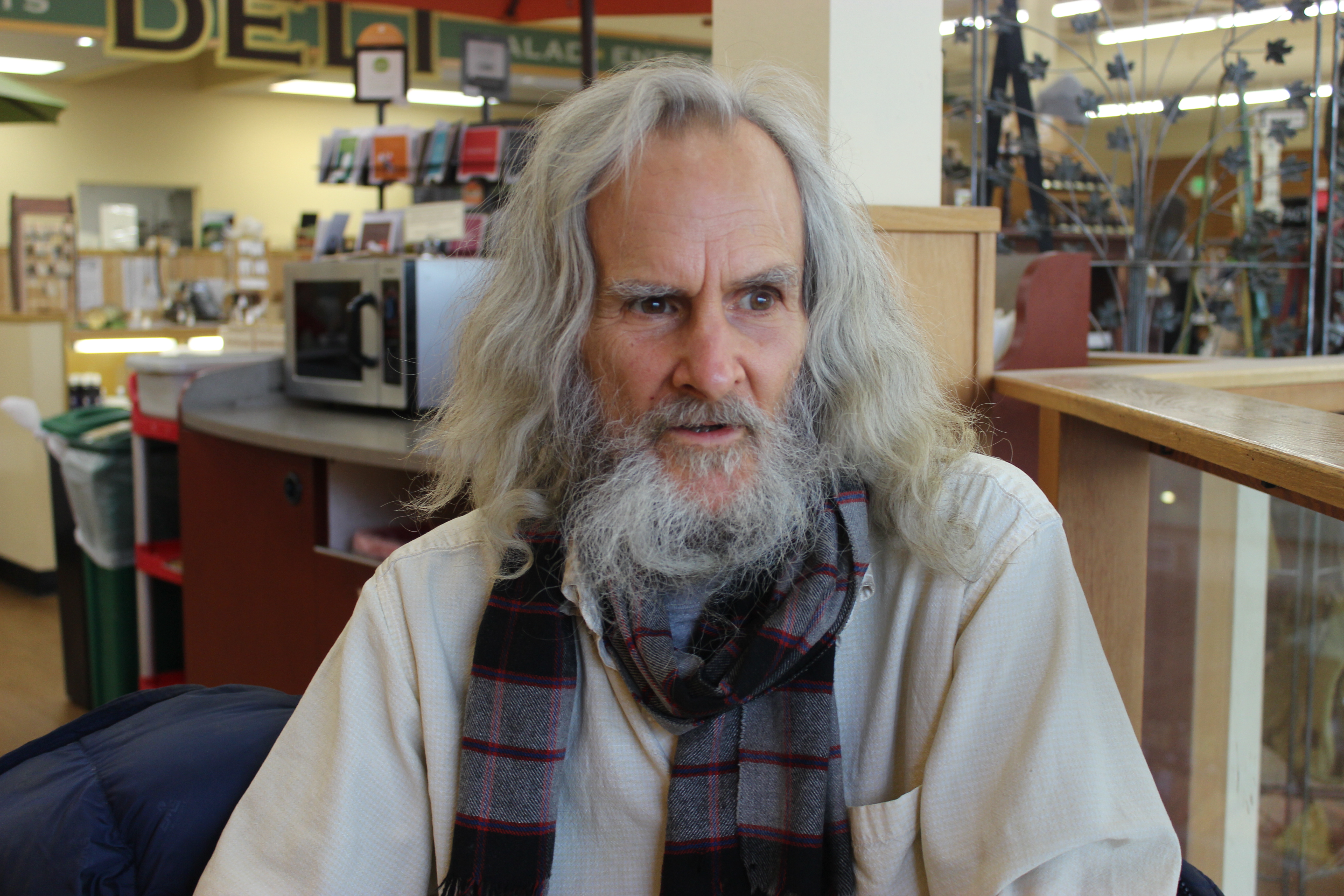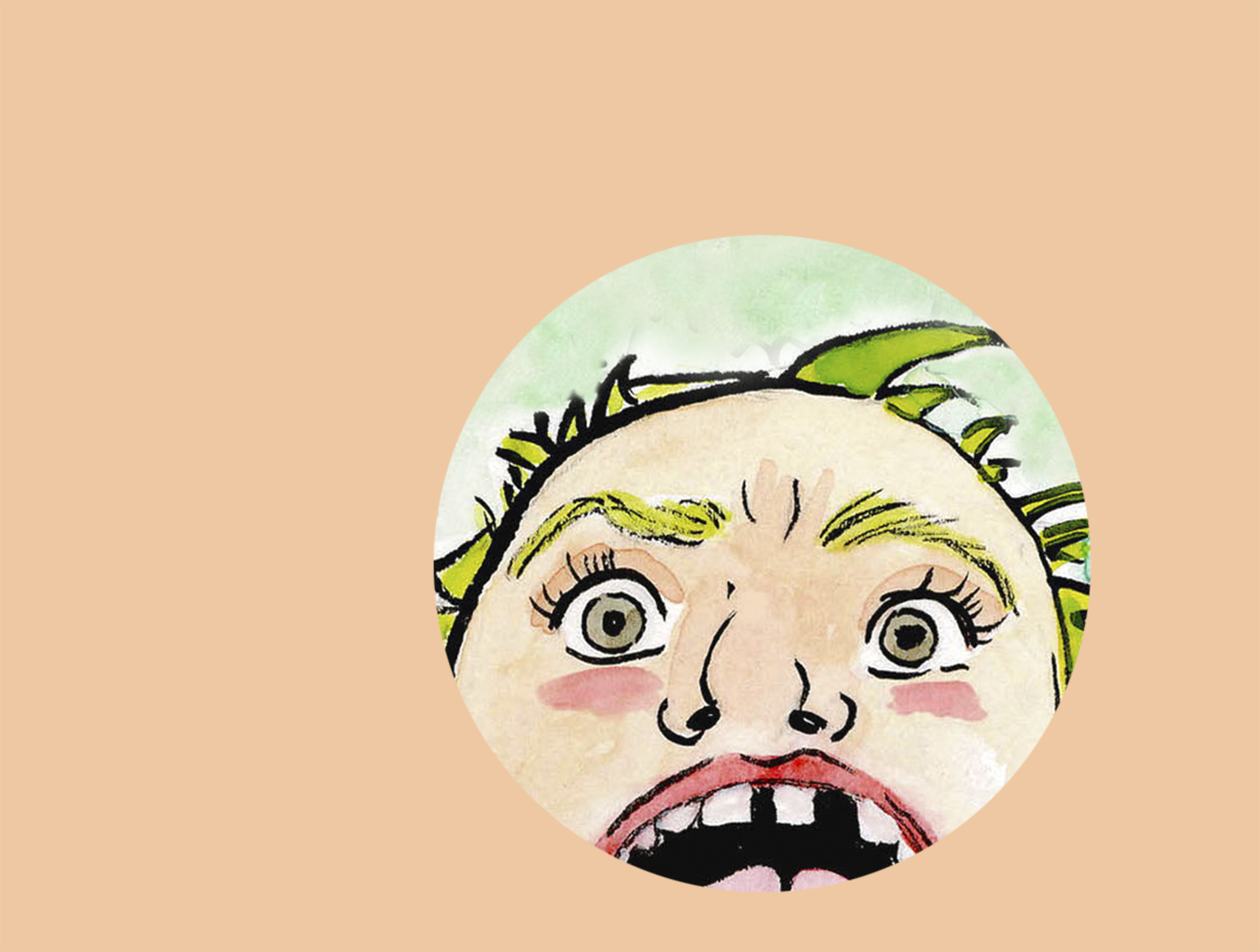Note: Make sure to check out our GIF Comic tour of Bickford’s home animation studio here.
For the past four years, Bruce Bickford has been sitting on a small, grubby trampoline in his living room, drawing vampires on a wooden light box. His house in Sea-Tac, inherited from his father, overlooks a steep hill shrouded by trees. He points out his window at the distant foothills to explain where his newest project takes place.
“Back in the hills there—I call them The Uplands in my stories—there’s this big cult. A vampire cult. There’s also this Aleister Crowley cult—he’s come back to start a new Golden Dawn cult with these genetically manipulated rattlesnake-vampire people. But . . . the other vampires want to find this secret drug that will let them go out into the sunlight so they can have picnics . . . Arrgh, I might need to take an aspirin here real quick.”
Stroking his long gray beard, Bickford shuffles over to his counter, covered in dusty doodads and knickknacks. The 67-year-old artist crushes two aspirins, funnels the powder into a cup, and fills it with a mixture of red and white grape juice. He slurps the potion through a straw, then coughs into his coat sleeve, which he’s patched with duct tape.
“Anyways . . . I was just trying to put together a proposal, like a 40-page thing, for a friend of mine who knew Quentin Tarantino, to try and get Tarantino to turn it into a feature film. But, ehhh . . . I kept adding to it, and now it’s about 500 pages. I really gotta finish it—I just keep getting caught up in the details.”
Portions of this sprawling, 500-pages-and-growing movie proposal, a graphic novel titled Vampire Picnic, form a good chunk of Vermillion’s ongoing exhibition of the local legend’s recent work. The other half of the show includes scale-model Twin Peaks replica sets, rendered in clay—a show Bickford says he didn’t even finish watching.
“When they were airing it on TV, they kept showing the new [episodes] on different days week to week, so I couldn’t keep track of it,” he scoffs. “I got rid of my TV in the early ’90s anyway. I think David Lynch could use some of my help. I would love if he picked the graphic novel up for a movie, too, but he’s been really hard to get a hold of.” (Possibly fortuitously, following our chat, it was announced that Lynch—after a 25-year-hiatus—will be again filming some of Twin Peaks’ third season here in the Northwest.)
Let’s back up a bit. For the sake of readers born after the heyday of Frank Zappa, for whom Bickford created animated short films during the ’70s, or even born after Twin Peaks’ two seasons on TV, who is Bruce Bickford? A self-trained Seattle artist who enlisted in the Marines (including a stint in Vietnam) after graduating from high school in 1965, he found himself in L.A. by the early ’70s, trying to pitch his work to animation studios.
Bickford recalls, “A lot of these places were impressed with my stuff, but they didn’t know how to use it. I even showed it to Disney, and they were aghast at how violent my stuff was. People think my stuff is too gnarly sometimes.” That was not a problem for Zappa, to whom Bickford was introduced by a mutual friend. Their half-dozen years of collaboration culminated in Zappa’s 1979 concert film Baby Snakes, shortly after which Bickford returned home to the Northwest.
Since then, the somewhat reclusive artist has continued to work as his own unhurried pace. (Brett Ingram’s 2004 doc Monster Road, available on YouTube, provides an overview of his career.) Handcrafted claymation movies are notoriously laborious to produce, and it took Bickford eight years to complete the half-hour Prometheus’ Garden (1988, available on YouTube) and two decades to finish the 40-minute Cas’l (2010, excerpts of which are also online).
Thanks to this meticulous work ethic, Bickford is never really done with his art. This seems to be both his blessing and his curse. As he tells me, “I got really into ancient Egypt when I was doing Vampire Picnic, because, well . . . it started because I got into pirates. Or, actually, I was working on a couple different stories before Vampire Picnic and then . . . ” He trails off, then shows me a drawing of “the Manticore,” one of many monsters from the latter project. Bickford enthusiastically digs out more illustrations from the many folders and boxes on his desk: “Here’s Napoleon and the Sphinx, and here’s Asmodeus the demon. The story is based in this area, but it goes back into the ancient history of Egypt.”
How exactly Egypt fits into the story of Vampire Picnic, Bickford has yet to figure out. He thinks there may be a link between the ancient sun-worshippers of Egypt and a modern-day sun cult at Golden Gardens, which Bickford has devised for his story.
Or at least that’s what I deduced, which Bickford seems to endorse when I tell him: “Ehhh . . . you know, actually, that might be the connection. I should write that down. Someone suggested that last night, too, at Vermillion.” If the plot of Vampire Picnic is still being formulated, Bickford is certain that his Crowley Vampire Cult uses Egyptian artifacts in their rituals; and he knows that his protagonist will transport the reader from modern times to ancient Egypt via a supercomputer. He continues, “The main guy is trying to figure out why the vampires are kidnapping all these goth teenagers from around town.” In a dumpster, Bickford’s hero finds “this computer [that] reads your mind. It puts up these things . . . like information collages to try and figure out the relationships between the vampires of The Uplands and these ancient Egyptian cults. Or . . . well, it’s groping for the information.”
When Bickford does hammer out the narrative, he hopes to publish Vampire Picnic with Fantagraphics, then possibly shape it into a feature-length movie. He wants it to be filmed in a style he calls “Versatile Reality,” which would mix live-action with many different styles of animation. Until then, Bickford is a lot like his imaginary supercomputer—groping for information in the vast warehouse of his brain and endlessly collaging the results.
He explains: “Look, I just want to be in the movie business, basically. I can be doing a lot of things. I could just be staying home working on my stuff. I could be doing more gallery shows, I have enough artwork . . . Do you want to look in the garage?”
Bickford opens the door to reveal two huge rooms, jam-packed with rows and rows of clay humanoids, forested landscapes, giant monster heads, werewolves, and mutants. They’re stacked in dizzying rows, like science-lab specimens on trays. “Most of these things have not even been used in movies yet,” he tells me. “It just took a little while to figure out how to make them.”
ksears@seattleweekly.com
VERMILLION 1508 11th Ave., 709-9797, vermillionseattle.com. 4 p.m.–midnight Tues.–Sun. Ends Feb. 7.








